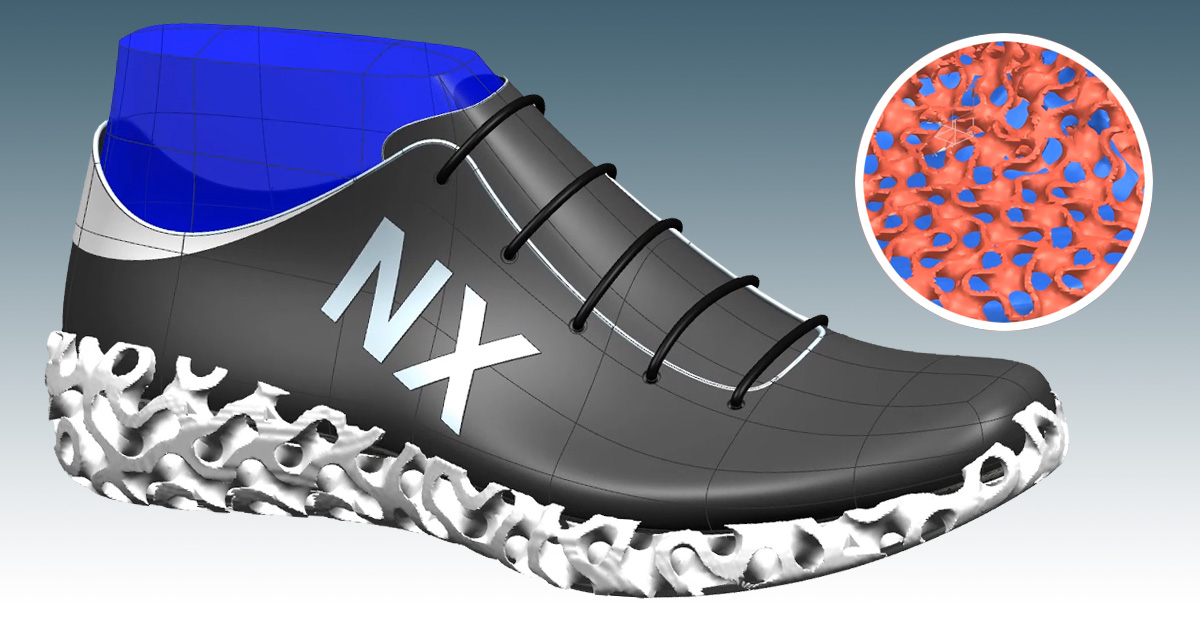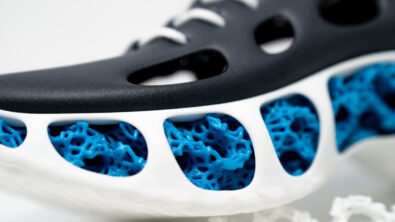Advancing Additive #10 – Implicit Modeling for Lattice-based Engineered Structures

Additive manufacturing has made it possible for companies to bring to life complex, nature-inspired designs leveraging engineered structures such as gyroids that require minimal or no supports when 3D printed. These structures, which you’ll find in butterfly wings and liquid crystals, are an example of triply periodic minimal surface (TPMS) structures. They’re particularly valuable for certain AM-driven applications, such as heat exchangers in aerospace and implant fills in the medical industry, due to their structural and thermal properties.
The problem with using TPMS structures for AM is the difficulty of designing them. With the latest release of NX (1953), that problem has been solved. NX has introduced a new “implicit modeling” module for creating equation-driven structures that can’t be designed through traditional CAD methods. The module includes a general equation builder with pre-defined examples and an out-of-the-box set of TPMS structures, including gyroids. In addition, the shelling, Boolean and blend operations of the new module are extremely robust, as this video example shows:
With this new implicit modeling module, users can create the kinds of natural structures that are proving so valuable in the development of additive manufacturing—optimizing their designs for such advantages as lightweighting, thermal flow, energy absorption, and 3D printing efficiency. And because the module is tightly connected within the AM design environment, model changes—even for features as complex as these engineered structures—are quickly and easily accomplished. While there may be niche software packages that can support TPMS modeling, none are woven as seamlessly into the end-to-end AM digital thread as NX’s new implicit modeling module.
About the writer:
Aaron Frankel is Vice President of Siemens’ additive manufacturing software program. He has over 20 years of experience in the PLM software industry and has held various positions in engineering services, product management, and marketing – all focused on helping manufacturers take advantage of the latest digital design and manufacturing technology.

